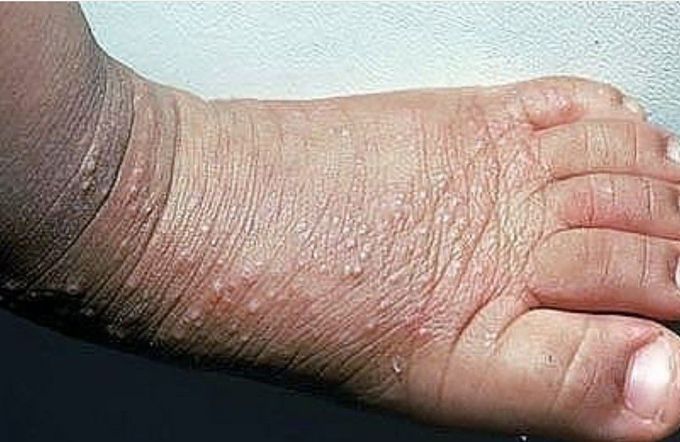


Acropustulosis of infancy
Acropustulosis is an itchy, uncomfortable skin condition that most often affects babies. Your child’s pediatrician may refer to it as acropustulosis of infancy. Though uncommon, acropustulosis can develop in older children and adults. Typically, that happens after an infection or injury. An acropustulosis rash may flare up several times over a period of months, regardless of treatment. Most cases of acropustulosis of infancy usually disappear by the age of 3. This skin condition doesn’t carry with it any other complications or long-term health problems.An acropustulosis rash usually appears just on the soles of the feet or the palms of the hands. The rash looks like small, reddish, flat bumps. The bumps can then turn into blisters or pustules. The pustules, which appear in clusters called crops, can be very itchy. Crops may come and go during a child’s first three years of life. They tend to be less frequent as the child approaches age 3. In most cases acropustulosis appears during the first year of life. Often, crops appear on the hands or feet within a few months after birth. Lesions appear less often on the sides of the feet and ankles, and on the wrists and arms. In older children and adults, acropustulosis appears primarily as blisters or pustules around the fingernails or on the toes. It can harm the nails, and in the most serious cases, acropustulosis can damage the bones.The cause of acropustulosis is unknown. Sometimes it develops before or after a child has a similar skin condition called scabies. A child can have an allergic reaction to the type of burrowing mite that gets into their skin and causes scabies. Acropustulosis may occur without scabies too. While scabies and chickenpox are contagious, acropustulosis isn’t. Children with a flare-up can still go to their school or day care center. Areas of skin with rashes may be slightly darker long after the rashes clear up. Eventually, the skin should return to its usual color.Treating an acropustulosis rash usually involves a topical ointment that includes a strong corticosteroid, such as betamethasone valerate (Betnovate). This should help reduce some of the skin inflammation and relieve some of the itchiness. A powerful antibiotic called dapsone (Aczone), which is sometimes used topically to treat severe acne, may be used for serious cases of acropustulosis. Both of these treatments have a significant risk of side effects and aren’t often used for children. Treatment of any kind is usually no longer necessary after about two years of on-again, off-again outbreaks. Usually, a crop will form on the skin and last for a week or two. This is followed by a period of two to four weeks without a rash. During that time, no treatment is needed. Depending on how significant the symptoms are, acropustulosis may not need to be treated with strong medication at all. To help relieve itchiness, your doctor may prescribe an oral antihistamine. Try to keep your child from scratching their lesions. Excessive scratching can lead to scarring. Cover your child’s feet with socks to protect their skin from scratching. Soft cotton gloves can sometimes keep them from scratching or rubbing their hands too much. If acropustulosis develops along with scabies, treatment of scabies will be necessary too.

